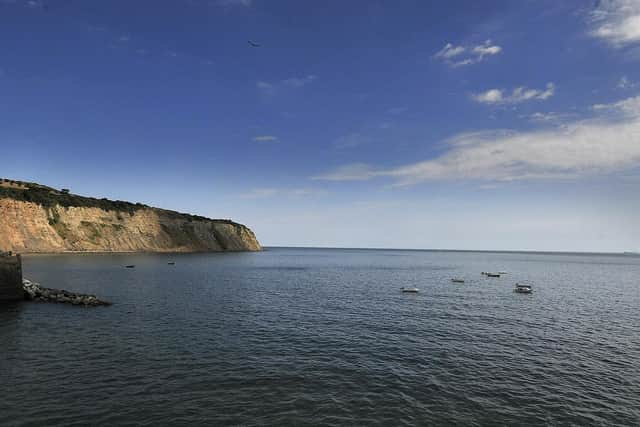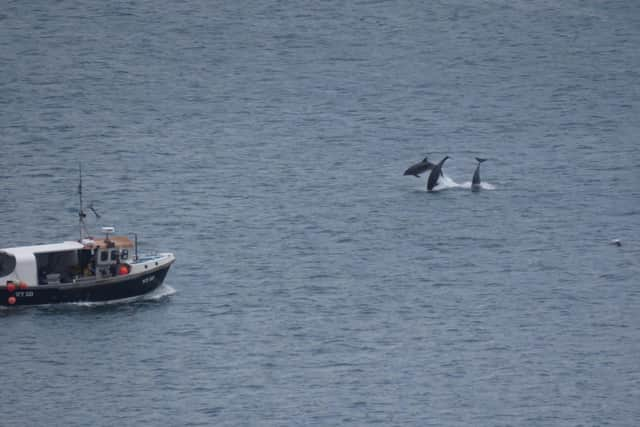Humpback whales, frolicking dolphins and rare birds breeding for the first time: The Yorkshire Wildlife Trust's year in review
The charity has released its year in review, with many of the most uplifting stories coming from its Living Seas team, which monitors the Yorkshire coast assisted by volunteers.
The YWT is optimistic that wildlife tourism in areas such as Scarborough and Whitby has the potential to lure visitors away from the Yorkshire Dales to the coast now that whales and dolphins are more commonly seen and boat tour operators are increasing in number.


Advertisement
Hide AdAdvertisement
Hide AdIn the summer of 2020, 30 per cent more surveys of cetacean sightings were submitted by volunteers watching from the shore, with 162 completed compared to 124 in 2019. Most of the whales seen were minkes, but Jono Leadley from the Trust also filmed a humpback breaching the water off Flamborough Head in a video that went viral.
There are now 40 'citizen scientist' volunteers who have been trained by Living Seas staff to record whale, dolphin and porpoise sightings. In 2020, they spent 200 hours surveying from 30 locations.
There have been increases in minke sightings since 2015, and local boat owners have responded by running whale-watching tours for visitors.
Marine advocacy officer Bex Lynam, who works for Wildlife Trust branches that cover the North Sea coast, said: “The public witnessed spectacular minke marvels, from watching the arc of their dorsal fins slicing through the still ocean waters, to the thrilling experience of standing on dry land and spotting these majestic marine mammals feeding just 100 metres off the Yorkshire coastline.


Advertisement
Hide AdAdvertisement
Hide Ad"We need to understand why these extraordinary creatures inhabit our waters and investment in research is badly needed if we’re to protect whales from the impacts of human activity, such as offshore wind developments or supertrawlers.”
The pod of around 100 bottlenose dolphins that are now regularly seen off Whitby, Scarborough and Bridlington - having originally swum south from the Moray Firth in Scotland two years ago - are also mentioned in the review.
This year, the Tees Valley Wildlife Trust took part in the North Sea Cetacean Recording Project for the first time, and observed 30 of the animals frolicking off Saltburn Pier one day in August, just metres from a crowd of onlookers.
A Trust volunteer set up a Facebook fan page for them, and observers have now established that the dolphin population, which appears to have permanently relocated from Scotland, travel up to 40 miles a day in groups of 30. There were 40 new volunteers from Teesside who joined the project in 2020.
Advertisement
Hide AdAdvertisement
Hide AdTees Valley wilder coast officer Jacky Watson said: “The sight of dolphins off Teesside was a complete revelation for lots of local people and a gift for photographers. Many people had no idea bottlenose dolphins could be seen in UK waters, let alone here.
"This partying pod of dolphins were highly visible, playing, breaching vertically, racing along at top speed with fin after fin arcing through the waves. Social media was ablaze with the action, with people keen to find out where and when they could see the dolphins having so much fun! It was a real tonic for the soul following the spring lockdown.
"Our volunteers are still fired up and will be surveying all winter. There is still so much to learn and there’s always a chance of spotting one of the North East’s celebrity dolphins, named Runny Paint.”
The Yorkshire Wildlife Trust also released details on the recovery of rare bird populations at several of its sites.
Advertisement
Hide AdAdvertisement
Hide AdAt North Cave Wetlands in the East Riding, a former quarry which the charity has owned since 2000, wildlife were seen returning to the area in large numbers for the first time. Birds such as bearded tits and redshanks bred, and three new sections of the nature reserve will open to the public in the spring.
There was also a significant milestone reached at Potteric Carr near Doncaster, where the 'big three' of rare wetland species bred on the reserve for the first time - marsh harrier, bearded tit and bittern. Staff had been working towards this goal since creating the Huxterwell Marsh area in 2006, and the reedbeds have now matured to the extent that they are a habitat for a range of species.
While on the lake at the Bolton-on-Swale nature reserve near Richmond, a pair of little ringed plovers bred for the first time in 30 years, and two chicks successfully fledged.
A sand martin bank and an osprey post have also been built at the site, and it is hoped that migrating ospreys which nest in Scotland and the Lake District may be attracted to Bolton-on-Swale to stay and breed.
Comment Guidelines
National World encourages reader discussion on our stories. User feedback, insights and back-and-forth exchanges add a rich layer of context to reporting. Please review our Community Guidelines before commenting.
